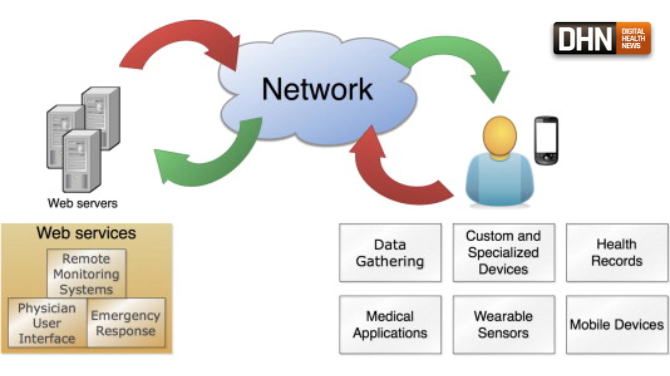
The rise of mobile health apps has significantly impacted chronic disease management, offering patients and healthcare providers innovative tools to monitor and manage conditions more effectively. With the increasing adoption of telehealth, these apps are becoming essential components of care delivery, especially for patients living with chronic diseases. In this article, we explore how mobile health apps are transforming chronic disease management and how they complement telehealth to improve patient outcomes.
What Are Mobile Health Apps?
Mobile health apps, or mHealth apps, are applications designed for smartphones and tablets that help users track, monitor, and manage their health. These apps provide tools for tracking vital signs like blood pressure, blood glucose, and heart rate, and can help patients with chronic conditions like diabetes, hypertension, and asthma better understand and manage their health.
These apps often come with features that enable real-time data sharing with healthcare providers, making them a crucial component of telehealth services. With the ability to access patient data remotely, healthcare professionals can monitor progress, offer personalized guidance, and make adjustments to treatment plans as needed.
How Mobile Health Apps Improve Chronic Disease Management
1. Enhanced Monitoring and Tracking
Mobile health apps allow patients to track their health in real-time, offering a constant, up-to-date picture of their condition. For chronic disease management, this is particularly valuable. For example, patients with diabetes can use apps to log their blood sugar levels, track food intake, and monitor physical activity. Similarly, those with heart disease can track blood pressure and exercise routines.
With this data, patients are more informed and can make adjustments to their lifestyle, diet, and medication as needed. This self-monitoring not only promotes better adherence to treatment plans but also empowers patients to take an active role in managing their health.
2. Improved Communication with Healthcare Providers
Mobile health apps often integrate with telehealth platforms, allowing patients to share their health data with healthcare providers remotely. This real-time communication ensures that doctors and specialists have the most accurate, up-to-date information on a patient’s condition.
For example, if a patient’s blood sugar level is too high, the app can alert the healthcare provider, who can then contact the patient for immediate advice or intervention. This kind of communication is crucial in chronic disease management, where regular monitoring is needed to prevent complications.
3. Personalized Health Plans
Mobile health apps use data collected over time to create personalized health plans. With features such as medication reminders, exercise suggestions, and nutrition tips, these apps help individuals manage their chronic diseases in a way that fits their lifestyle.
By providing real-time feedback and tailored recommendations, mobile health apps can make chronic disease management more effective and sustainable. When integrated with telehealth platforms, healthcare providers can adjust these plans remotely based on the patient’s progress, ensuring that they receive the best care possible.
4. Improved Medication Adherence
For patients with chronic conditions, sticking to prescribed medications is crucial to avoid complications. Many mobile health apps come with medication reminders that notify patients when to take their medication and even track doses. This feature ensures that patients don’t forget their treatment, which is common with chronic disease management.
Some apps even allow patients to set up refill reminders, ensuring that they never run out of their medication. These reminders, coupled with the convenience of telehealth consultations, help ensure continuous care and better health outcomes.
5. Remote Monitoring and Early Intervention
One of the most significant advantages of mobile health apps is their ability to facilitate remote monitoring. Patients can be monitored from a distance, and healthcare providers can track changes in their health in real-time. This remote monitoring is especially beneficial for patients with chronic diseases, as it allows for early intervention before a condition worsens.
For example, if a mobile health app detects an abnormal heart rate or blood pressure reading, it can alert the patient and their healthcare provider immediately, allowing for timely intervention. This real-time capability is a key feature of telehealth, enabling patients to receive care without needing to visit a doctor’s office regularly.
The Future of Mobile Health Apps and Telehealth
As telehealth continues to expand, the role of mobile health apps will grow even more important. The combination of remote monitoring, real-time data analysis, and continuous communication between patients and healthcare providers will make managing chronic diseases more efficient and personalized.
Future advancements in AI and machine learning could allow mobile health apps to predict health trends and provide proactive recommendations. This will further improve chronic disease management, offering even more tailored care and reducing the likelihood of complications.
Conclusion
Mobile health apps are revolutionizing the way chronic diseases are managed by offering real-time monitoring, personalized care plans, and enhanced communication with healthcare providers. When combined with telehealth, these apps empower patients to take control of their health while providing healthcare professionals with the tools to offer better, more effective care. The continued evolution of mobile health apps, along with telehealth services, holds the potential to transform chronic disease management, improving patient outcomes and quality of life.